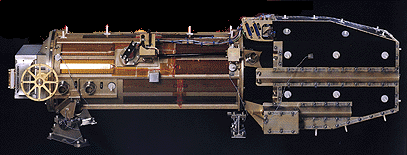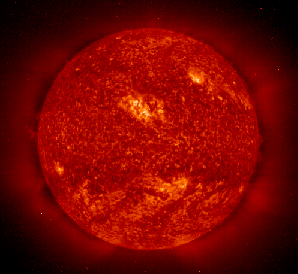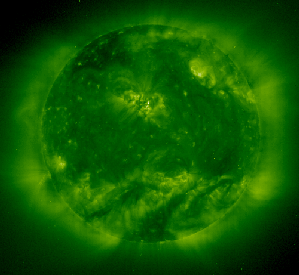
EIT: a normal-incidence, multilayer telescope.
Extreme ultraviolet Imaging Telescope

EIT images the solar transition region and the lower corona, ie the Suns lower atmosphere. It does this in ultraviolet light and uses four different ranges, corresponding to different temperature and density ranges. The different ranges correspond to filters made from different elements, the different filters and there uses are:
| Element | Wavelength | Average Temperature | Used For |
| Helium (He II) | 304 Angstroms | 8,000 Kelvin | Observing the chromosphere (the very low solar atmosphere) |
| Iron (Fe IX-X) | 171 Angstroms | 1,300,000 Kelvin | Observing the corona and the transition region |
| Iron (Fe XII) | 195 Angstroms | 1,600,000 Kelvin | Observing the corona |
| Iron (Fe XV) | 284 Angstroms | 2,000,000 Kelvin | Observing hotter active parts of the corona |
The number by the element in Roman Numerals identifies different types of the element. An Angstrom is 0.000,000,01 cm and Kelvin is a temperature scale which is the same as Celsius except it starts at -273 C.
 |  |
 |  |
EIT can take images of the full Sun or can focus in on smaller regions. This allows it to study phenomena in the corona such as coronal loops (streams of hot dense plasma which loop out from the surface of the Sun) and prominences (dense plasma which is held above the surface of the Sun by magnetic forces, counteracting the effects of gravity).

Pictures and infomation courtesy of the SOHO EIT consortium.